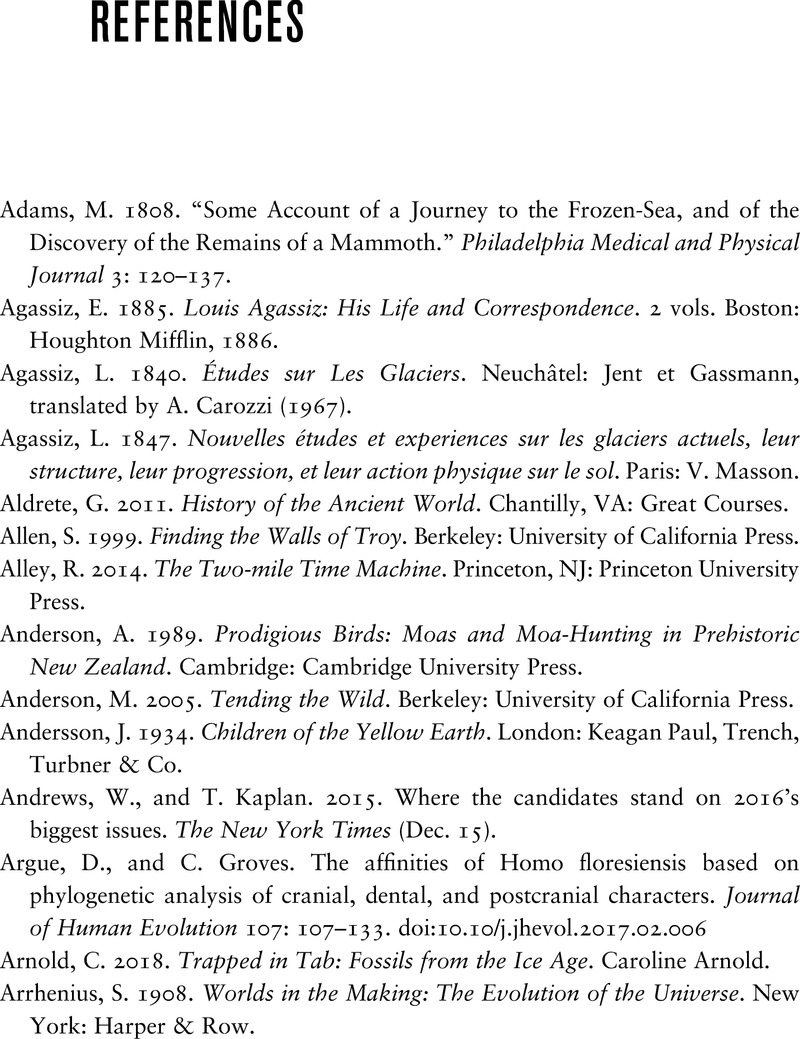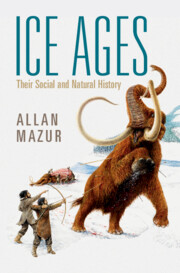Book contents
- Ice Ages
- Reviews
- Ice Ages
- Copyright page
- Dedication
- Contents
- Preface
- 1 In the Beginning
- 2 “Bursting the Limits of Time”
- 3 Darwin’s Revolution
- 4 Discovering an Age of Ice
- 5 Why Does Climate Change?
- 6 Dating Ice Age Climates
- 7 Why Does Climate Change?
- 8 Why Does Climate Change?
- 9 Ecce Homo
- 10 How Did Extinct Hominins Behave?
- 11 Life in the Paleolithic
- 12 Extinction of Large Ice Age Mammals
- 13 Agrarian Transformation
- 14 Rise of Civilizations
- References
- Index
- References
References
Published online by Cambridge University Press: 16 February 2022
- Ice Ages
- Reviews
- Ice Ages
- Copyright page
- Dedication
- Contents
- Preface
- 1 In the Beginning
- 2 “Bursting the Limits of Time”
- 3 Darwin’s Revolution
- 4 Discovering an Age of Ice
- 5 Why Does Climate Change?
- 6 Dating Ice Age Climates
- 7 Why Does Climate Change?
- 8 Why Does Climate Change?
- 9 Ecce Homo
- 10 How Did Extinct Hominins Behave?
- 11 Life in the Paleolithic
- 12 Extinction of Large Ice Age Mammals
- 13 Agrarian Transformation
- 14 Rise of Civilizations
- References
- Index
- References
Summary

Information
- Type
- Chapter
- Information
- Ice AgesTheir Social and Natural History, pp. 238 - 250Publisher: Cambridge University PressPrint publication year: 2022
